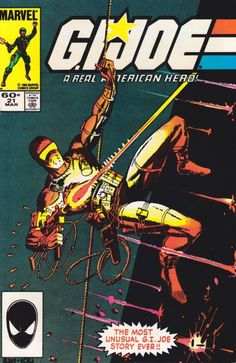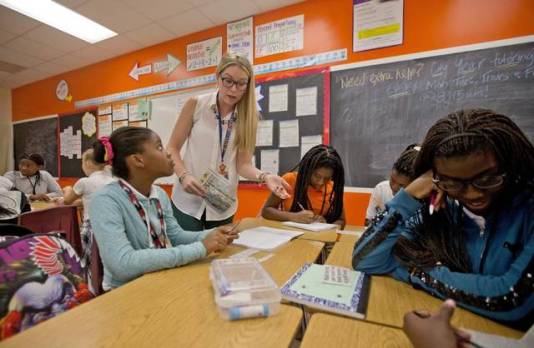
Last time we examined the topic of “Word Balloons,” with the focusing on how teachers sound when they speak in classrooms.

Spoken in a classroom somewhere.
This time let’s go further by considering how teachers look during their interactions. I’m not talking about how teachers dress, although that is an important issue and one we’ve already addressed (summary: keep it functional, simple, conservative, and non-CGI).
Teacher appearance, in the present case, refers to the outward actions and mannerisms displayed during classroom instruction. These non-verbal behaviors include facial expressions and body language–the unspoken communication that accounts for up to 93% of all human interactions (Mehrabian, 1968).

With the topic of voice tone (word balloons), our inspiration was Marvel’s mouthy antihero Deadpool. It’s only fitting that our model hero for unspoken behaviors is the mute commando Snake-Eyes of G.I.Joe fame (Hasbro’s toy-line featuring military super-heroes).
Despite being on opposite sides of the dialogue scale, Deadpool and Snake-Eyes share similar skills and accessories. Interestingly enough, G.I.Joe artist Robert Atkins recently shared a mock-up image depicting these two fan-favorite characters.

One of the most celebrated G.I.Joe stories is from Marvel’s original comic book series, issue #21: “Silent Interlude.” This tale is famous because it features absolutely zero dialogue or sound effects.
The adventure follows Snake-Eyes on a rescue mission to save Scarlett from Cobra and a castle of ninjas, including Storm Shadow. (If that previous sentence doesn’t excite you, you’re not a child of the ’80s. And you missed two major characters’ backstory revelation in the issue’s last few panels.)

Below are a few sample pages. Notice how writer/artist Larry Hama conveys a range of motions AND emotions with expressions and movement.
Take a long, close look and enjoy the silence.




This “silent issue” is not just a gimmick. It became so legendary, in fact, that the format has been repeated a few times in the G.I.Joe comic series as well as other titles, including a Deadpool parody and even an entire month called “‘Nuff Said,” where all Marvel comic book titles featured silent issues with no dialogue or captions.
Teachers typically don’t fight off ninjas hordes in silence, but we can foster powerful connections and teachable moments with unspoken behaviors.
What do these look like? Here are some example “non-verbals:”
- Moving back and forth among students. Avoid prolonged, stagnate standing in one spot (especially the front). Closer proximity garners more attentive students and decreases likelihood of off-task behaviors.

- Open arms and hands inviting student input (as opposed to crossed arms, which convey defiance or disinterest).

- Counting on your fingers to show you expect answers and ideas from multiple students.

- Nodding your head to acknowledge student contributions without using excessive praise.
- Leaning toward students to express curiosity, but not looming over them in a dominating or threatening way.
- Lowering your chin or cocking your head to one side to communicate concern and interest.

- Sitting or kneeling down at the students’ level to show cooperation.

- Using appropriate lengths of eye contact with students, while avoiding prolonged and awkward stare downs.

- Smiling! If you enjoy teaching, show it. (Again, avoid prolonged and awkward grins.)

For any teachers doubting the power of unspoken behaviors, posture, and expressions, I present the following challenge: Watch a video of yourself teaching with the volume muted.
Ask yourself what unspoken, but clearly presented messages you convey to your class. How do you come across? Are you respectful? Are you confident and caring? Are you happy to be there?
Look closer at your students and study their non-verbal behaviors too. How much do they engage in the lesson? How do they treat each other? What can you learn from them?

How many students are engaged in learning?
Better yet, don’t wait for a video to notice these things. As you teach, pause and survey the classroom to pick up on students’ mannerisms, posture, and expressions. Take a moment and consider what you are communicating through these same behaviors.
Here are a few resources for further reading and ideas:
1. “Good body language improves classroom management” article by Teal Ruland, National Education Association
2. “Using effective body language to establish relationships with students” video by the Teaching Channel
Need more practice? Try out your expressions and mannerisms in front of the mirror.

Keep practicing, buddy.
Whatever you do, work to express warm, welcoming messages through your body language. Your students will soon respond in kind. Whether spoken or unspoken, every interaction counts.

Not about teaching, but CNN has a story about the “power of POSTURE” here . . .
http://www.cnn.com/2016/03/28/health/power-postures-online-dating/index.html
LikeLike